participatory performance
The performance is letting participants explore the socio-political and linguistic phenomenon of “we” amidst themselves. Exposed to a profusion of “we”s they explore the shift between the way they perceive themselves and the way they exist in language. Being left only with language and themselves, they start understanding that what they used to accepted and believe to know is something they have not understood.
The participatory performance has been preceded by a video-research.
more about this work︎︎︎
The participatory performance has been preceded by a video-research.
more about this work︎︎︎
In our formulations of who we are, the actual transformations we are undergoing often remain unnoticed or underestimated, al-though the changes they provoke are radical and relatively fast. Therefore, existing words are either expanding or completely changing their meanings in order to preserve their legitimacy in our world. “We” is marked by these phenomena. It is malleable by nature, therefore changes are hard to notice. Defined as the “speaker and some other person or persons”, “we” is a list. Paradoxically, a list with a single item listed- “me”, the speaker. Yet, “we” is an important word. “We” decides about inclusion and exclusion.“We” grants human rights. “We” is power and authority. Just think of the American constitution: “We the people”
![]() The space in front (above) and behind (below) the one-way mirror at the beginning before the participants enter.
The space in front (above) and behind (below) the one-way mirror at the beginning before the participants enter.
![]()
The space is divided in two by a one-way mirror. Participants enter the space in front of the mirror together as a possible “we”. On the other side of the mirror a performer seems to be saying the words reaching the participants from speakers. His mouth is being streamed onto the surface of the mirror.
The participants enter the space together. The space is split in two by a one-way mirror. At the beginning, they are all together on one side of the mirror. They could be called “we”. They would call themselves “we”.
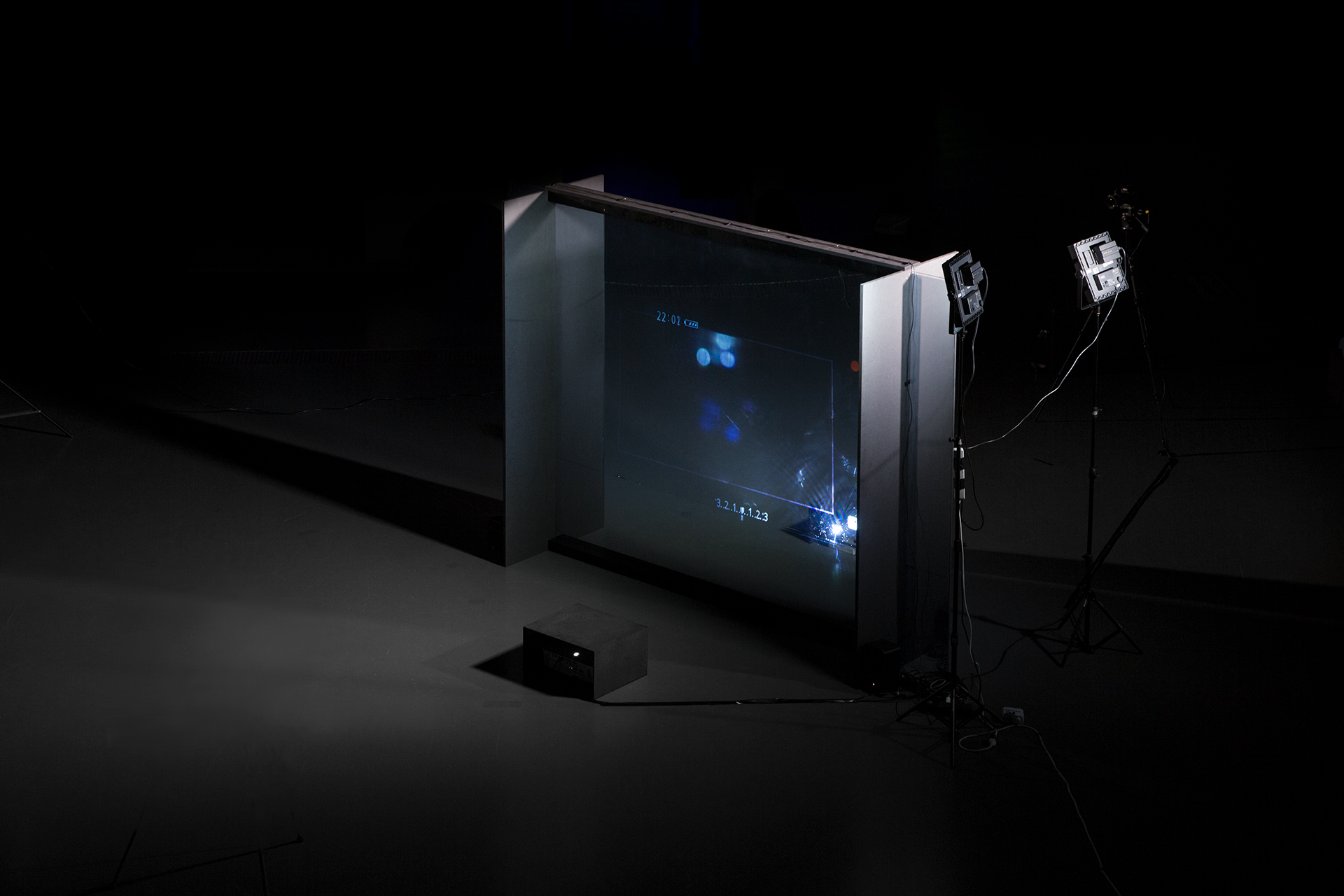 The space in front (above) and behind (below) the one-way mirror at the beginning before the participants enter.
The space in front (above) and behind (below) the one-way mirror at the beginning before the participants enter.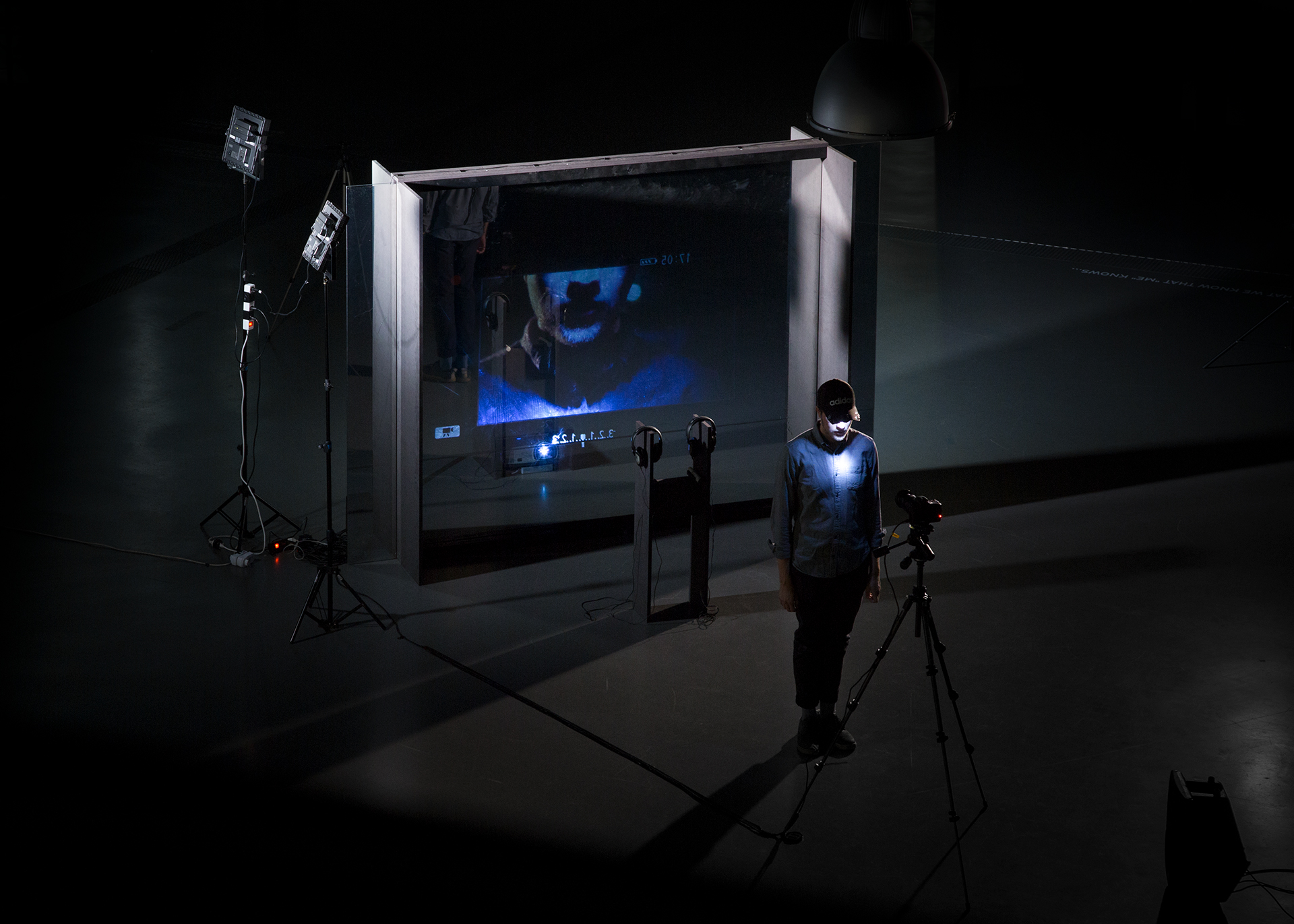
The space is divided in two by a one-way mirror. Participants enter the space in front of the mirror together as a possible “we”. On the other side of the mirror a performer seems to be saying the words reaching the participants from speakers. His mouth is being streamed onto the surface of the mirror.
The participants enter the space together. The space is split in two by a one-way mirror. At the beginning, they are all together on one side of the mirror. They could be called “we”. They would call themselves “we”.
The speakers start speaking. It is an explosion of “we”s. However, the more the participants know about “we”, the less they understand it.
![]() The space in front (above) and behind the mirror after the participants arrive, listening to the narration for the first time.
The space in front (above) and behind the mirror after the participants arrive, listening to the narration for the first time.
![]()
Yet, they tend to obey the voice. They obey when they are invited to split under the pretext of using the headphones on the other side of the mirror. They try to obey when they are invited to share parts of what they hear in the headphones. They obey when they are asked to return in front of the mirror. They try to obey when they are asked to pretend nothing has changed. They do so three times.
![]()
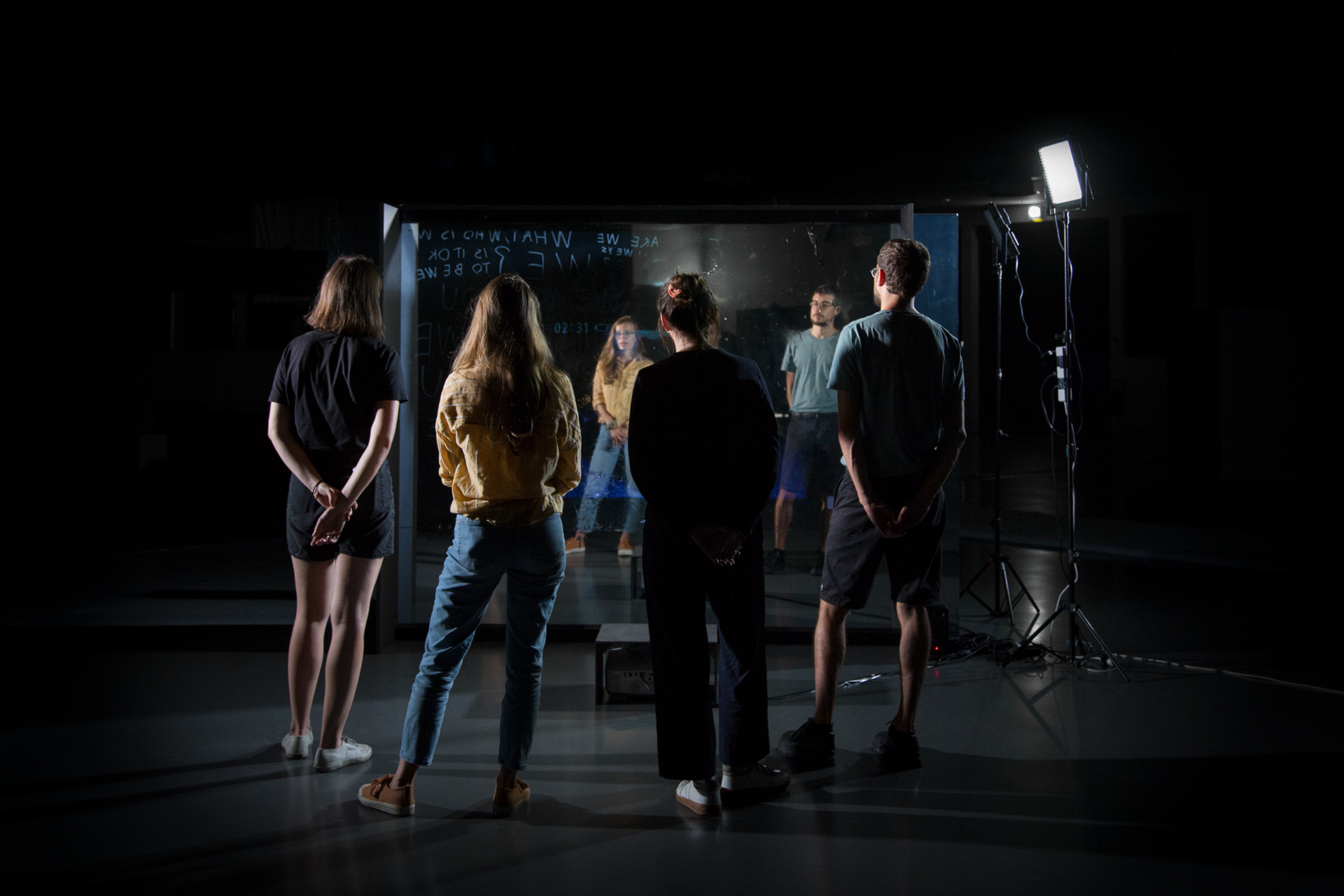 The space in front (above) and behind the mirror after the participants arrive, listening to the narration for the first time.
The space in front (above) and behind the mirror after the participants arrive, listening to the narration for the first time.
Yet, they tend to obey the voice. They obey when they are invited to split under the pretext of using the headphones on the other side of the mirror. They try to obey when they are invited to share parts of what they hear in the headphones. They obey when they are asked to return in front of the mirror. They try to obey when they are asked to pretend nothing has changed. They do so three times.
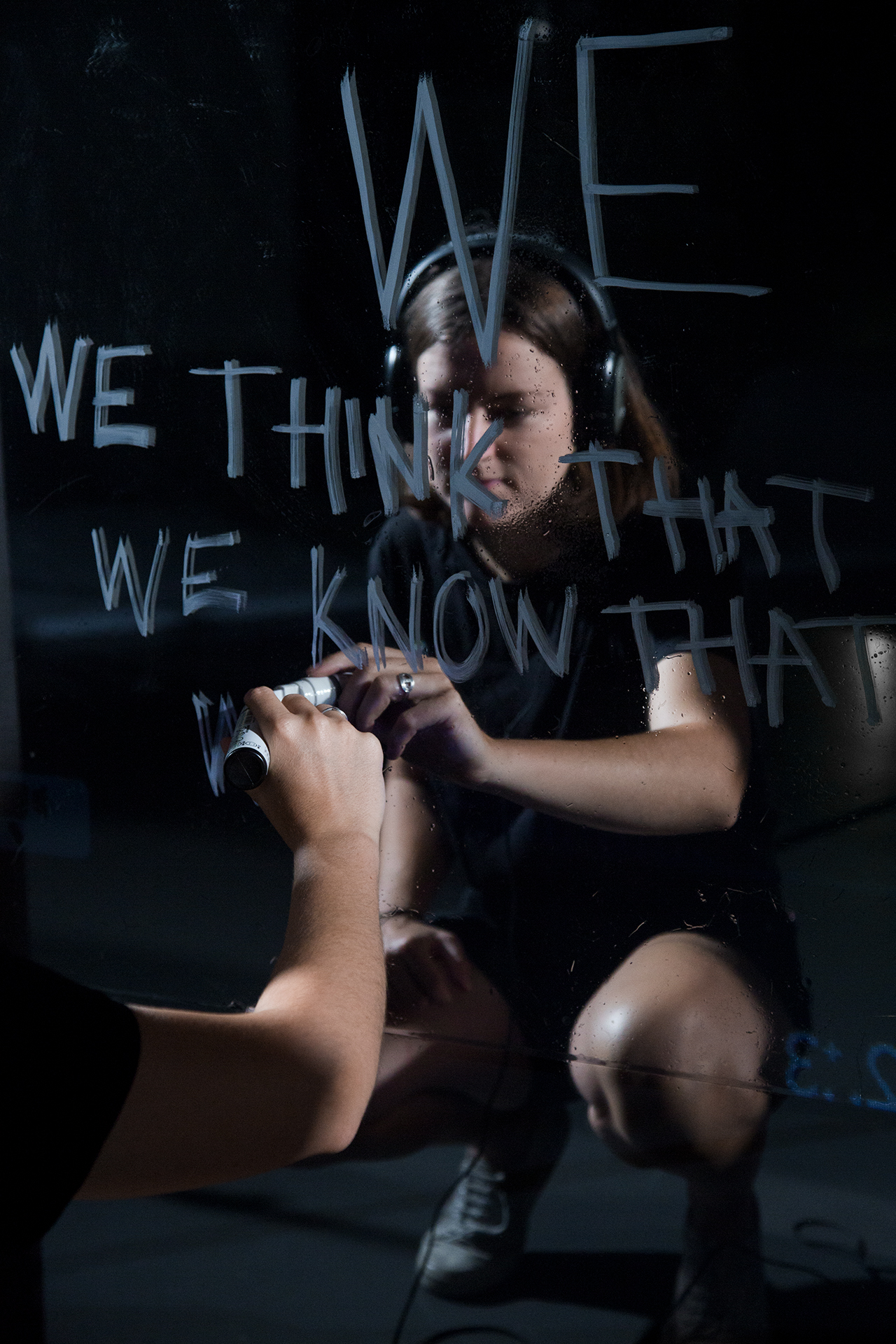
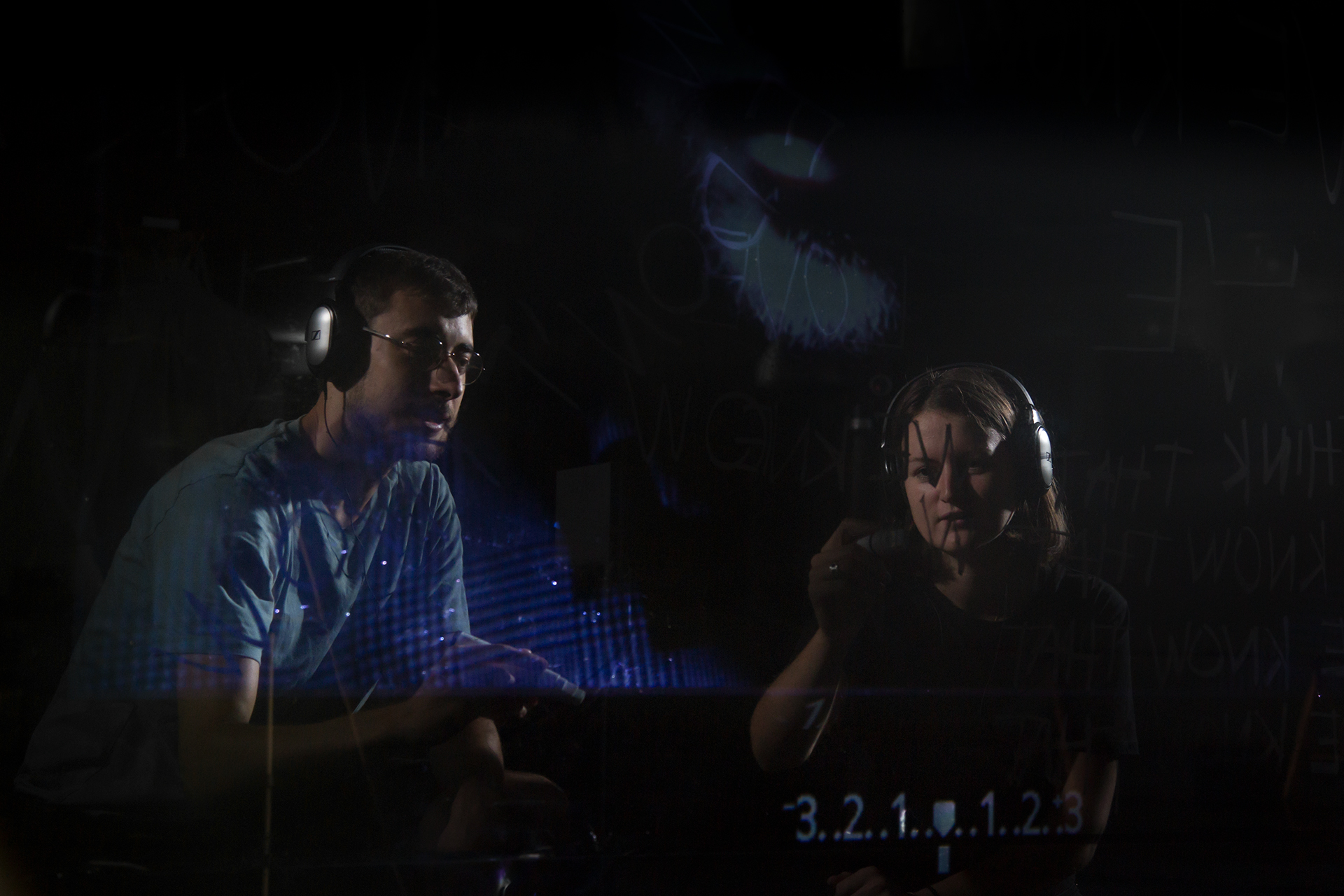 Two of the participants listening to the headphones on the other side of the mirror and sharing parts of what they hear with the others hearing the same narration again in the speakers.
Two of the participants listening to the headphones on the other side of the mirror and sharing parts of what they hear with the others hearing the same narration again in the speakers. Three time does the group’s composition change. Three times, the same explosion of “we”s is repeated by the same voice in the same space. The word is still the same-“we”- although its meaning is changing.
Three time does the group’s composition change. Three times, the same explosion of “we”s is repeated by the same voice in the same space. The word is still the same-“we”- although its meaning is changing.The participatory performance is based on Brandon Labelle’s Lexicon of the Mouth: Poetics and Politics of Voice and the Oral Imaginary and Ian Bogost’s Alien Phenomenology or What It’s Like to Be a Thing. The performance is written for speakers and two pairs of headphones.
photo credits: Raphaëlle Mueller
WE KNOW THAT "ME" KNOWS THAT WE KNOW THAT "ME" KNOWS ...